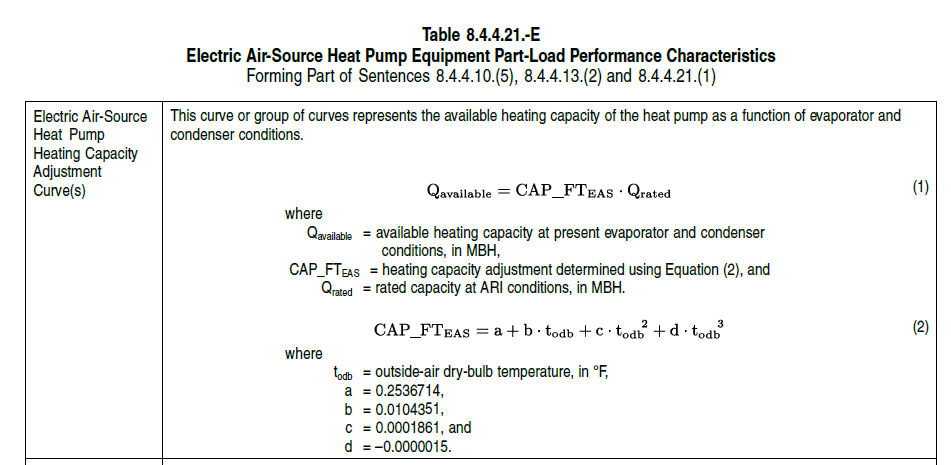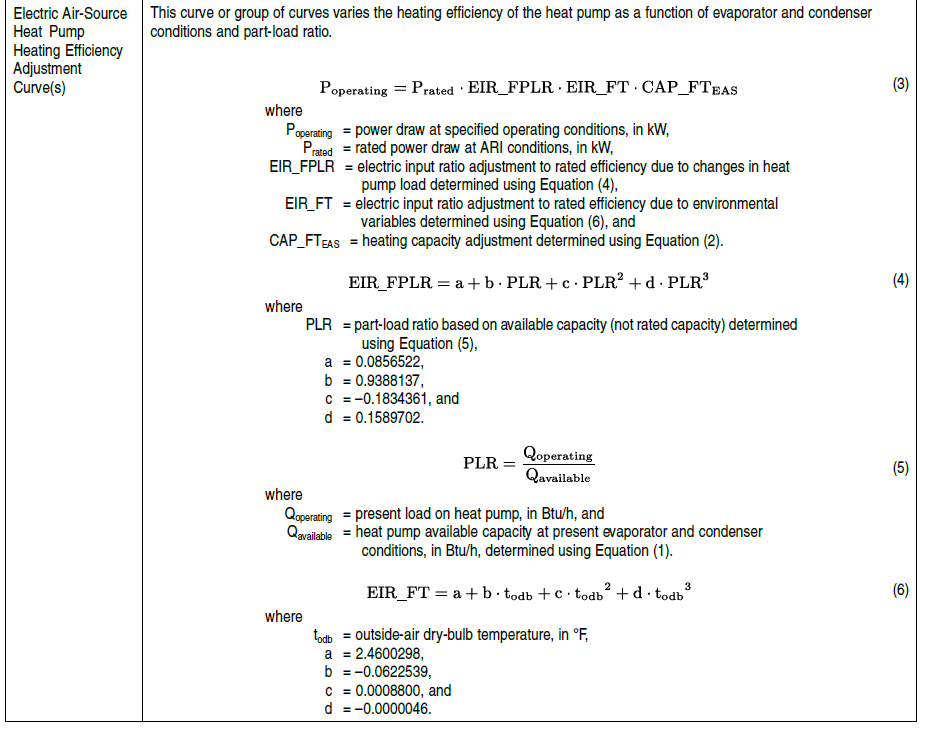NECB Heat pumps Performance curves
Hello,
I'm sure there is something simple that I'm missing here. I'm trying to model a NECB 2015 code compliant reference building to compare with a new proposed building. I'm using openstudio 2.9. The proposed building is a mid-rise appartement building. We are currently evaluating the possibility to integrate air-to-air heat pumps to the project. I used the PTHP zone equipment to try to model this. I have no problem running the model with this equipment with default values and autosize. For the reference building I need to change the performance curves so that they respect NECB criteria. Here is my problem, most of NECB curves for the heat pumps are cubic like here:


But most of the PTHP curves inputs are quadratic or biquadratic like specified here for the DX heating coil.
What would be the approach to model these heat pump curves?






Here's a NECB-related, OpenStudio-SDK-based unit test of cubic curves for heat pumps. May help. Careful with the units.
This is really interesting, thank you! I'm not really familiar with the SDK. I understand it's the documentations adn tools to write measures. Did I get that right? The language in the unit test link you shared remind me of what we can see in measures. Do I need to run this measure to integrate this unit test in my model? It seems to have other dependencies at the begining. What folder or files would I need to make this work? And where would I put them? In my measures directory?
I heard about measures to creat NECB prototypes but never got my hands on them. Is this part of this work?
SDK = common devkit for OpenStudio gems and tools, like OpenStudio-Standards & Measures, SU plugin & other 3rd-party apps. Although the OpenStudio App rests on the SDK, it doesn't offer ALL of the SDK features, e.g. edit performance curve coefficients, but not switch curve types. However, the App will preserve valid .osm edits done by hand (using a text editor).
Performance curves are basic OpenStudio resources (they are referenced, but don't reference anything themselves), so pretty safe to edit a .osm file by hand: look up the heating coils that have been added by the App (e.g. an example), and edit the curve type (e.g. "OS:Curve:Quadratic" to "OS:Curve:Cubic") and coefficients (e.g. a related example) ... which happen to be the curves you're after. Once edited, reopen using the App. May need a few tries.
e.g. NECB DX heat CAP_FT defined here (read "notes"), read-in here, called here - thanks Chris Kirney!